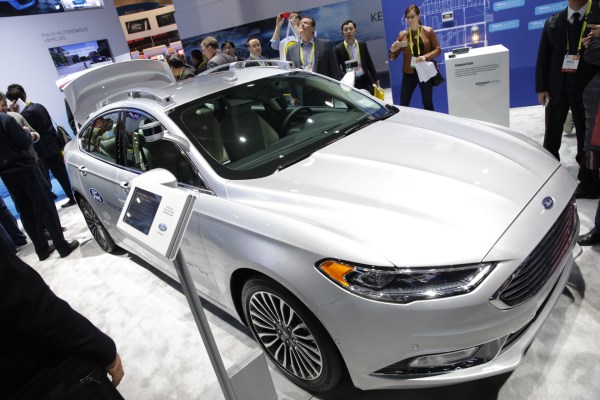Ford’s still keen on its mission of delivering a fleet of self-driving vehicles in operation by 2021, but there remain significant technical hurdles to overcome between now and then. Ford’s chief program engineer for autonomous vehicle development Chris Brewer detailed some of the biggest challenges his team needs to take on to ensure its self-driving cars can take the road — safely — in time for the company to meet its goals.
Brewer wrote about making sure the car components of the self-driving vehicle are still a car in terms of safety, redundancy and reliability. For one, there has to be some kind of steering control system that relies on simple mechanical control in case a power-steering system in a self-driving car fails — a tricky proposition as there’s no physical steering wheel to turn.
With power steering, in a worst-case scenario that involves a total failure of the system, there’s always the option of a human driver just cranking the wheel more to directly control the angle of the wheels. With a completely hidden drive control mechanism, where steering is controlled entirely via software, there’s still a need to figure out the best way to build in mechanical redundancy so the vehicle can be steered even when power steering gives out.
The other major challenge in terms of car hardware mentioned by Brewer is something that’s required of all equipment in vehicles in order to classify it as “automotive grade” — rigorous testing for endurance in a range of environmental conditions.
Cars aren’t like iPhones, held mostly in your pocket or bag, and often wrapped in protective casing; they’re exposed to the elements, both while driving and often while at rest as they’re parked in open-air driveways. That means building sensors and computing components that not only perform to expectations, but that are also built tough enough to endure long useful lives in extreme cold, rain, snow and desert heat.
These might not be the flashiest parts of self-driving car development — most attention is often directed at advances in neural networks and autonomous vehicle AI software. But it’s still interesting to see what Ford and its AV team believe are the big hardware challenges remaining that need to be solved between today and 2021.
